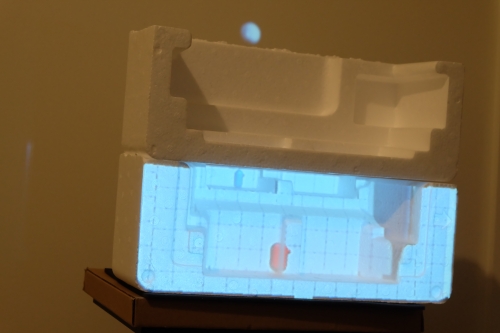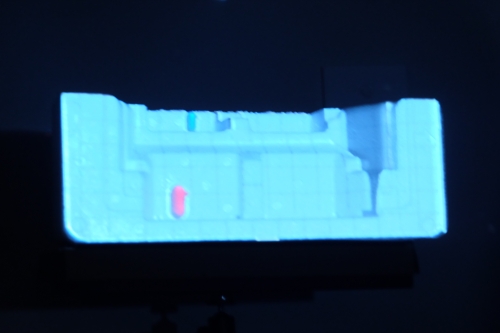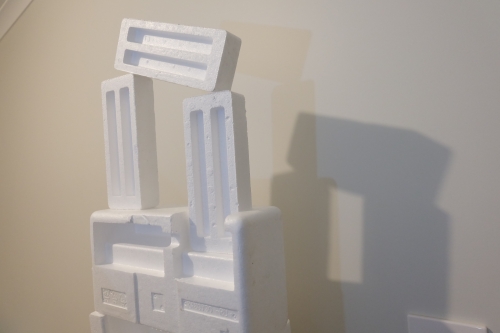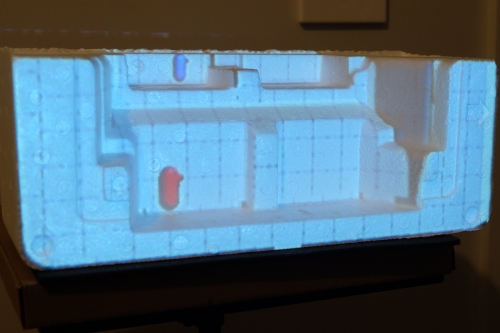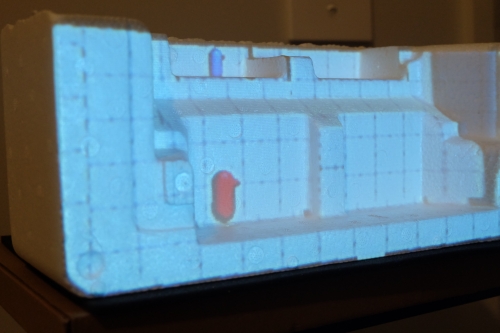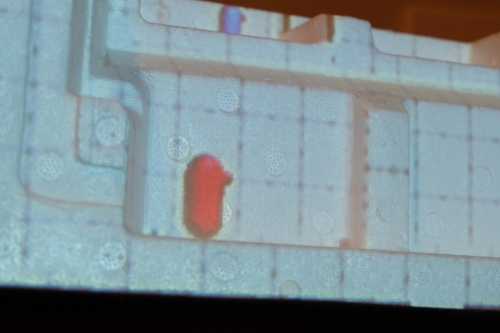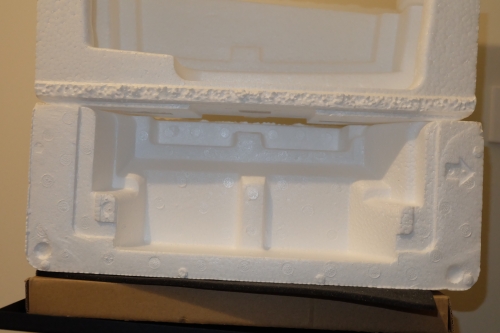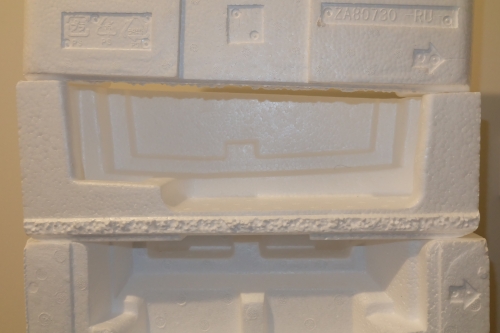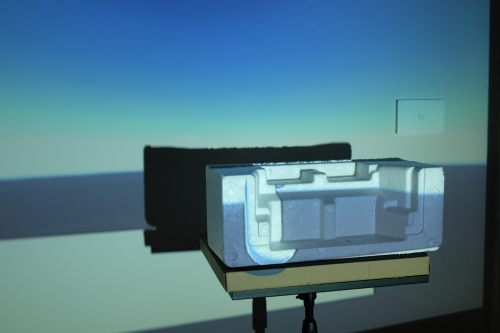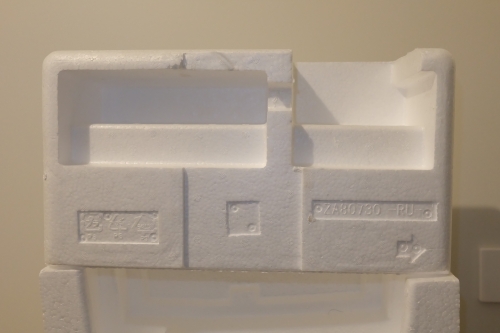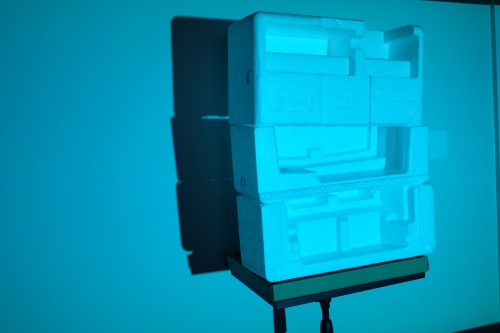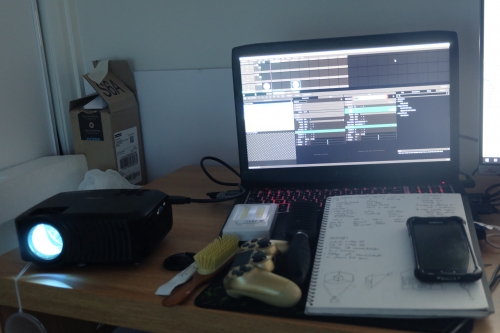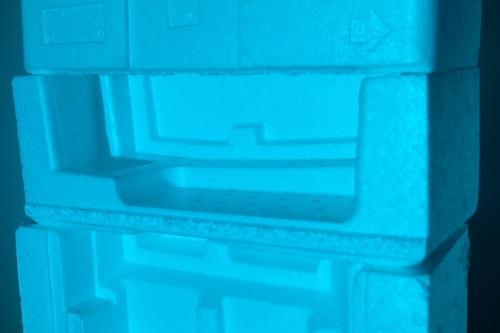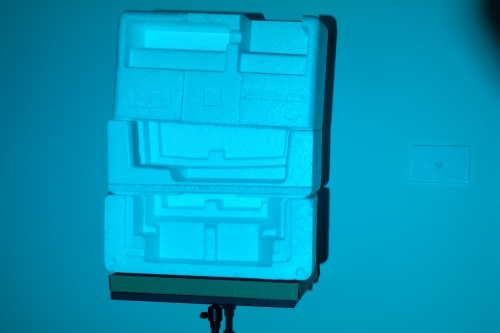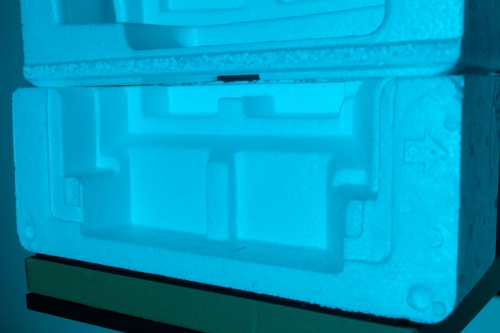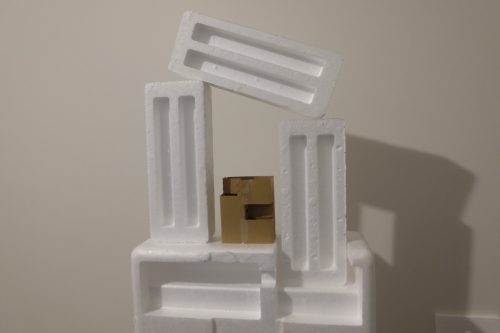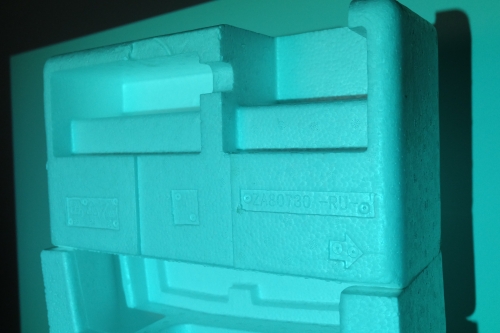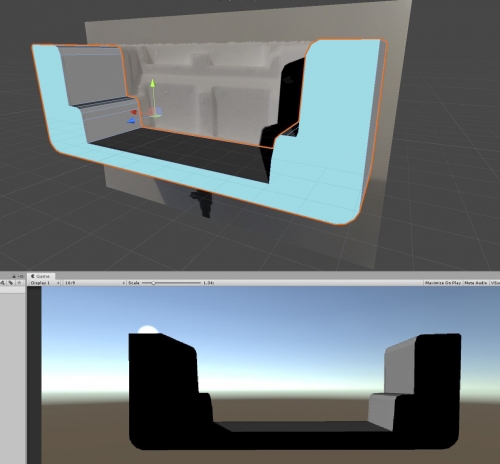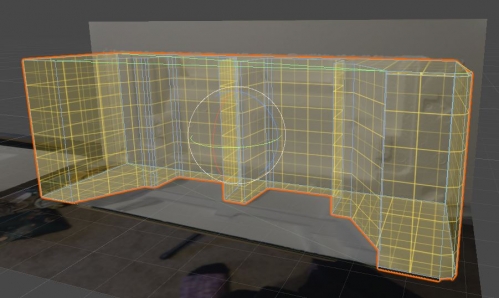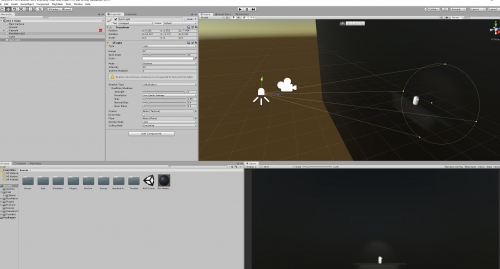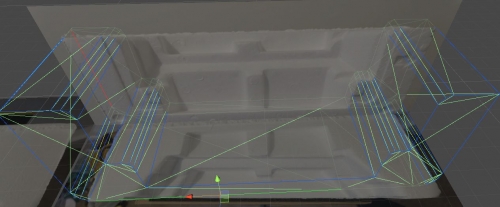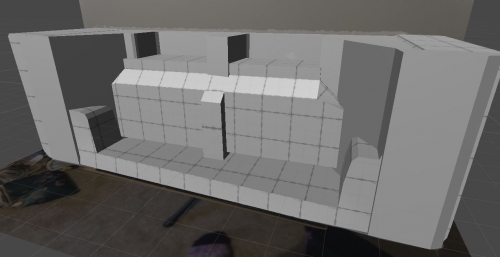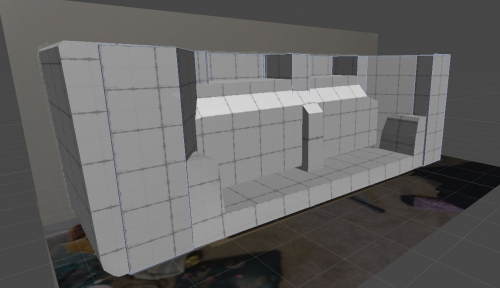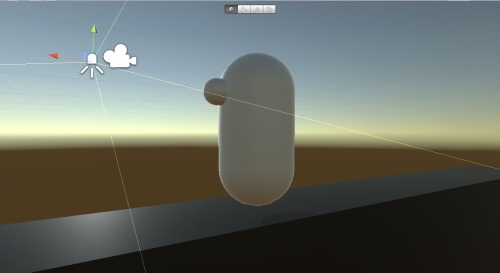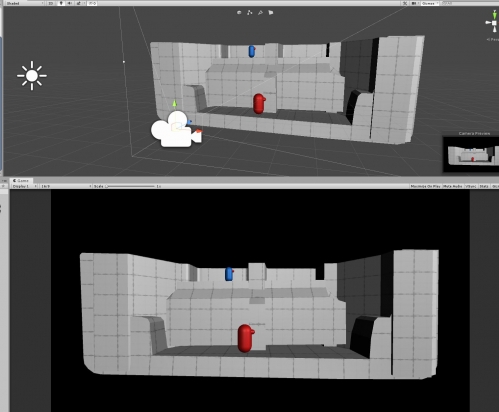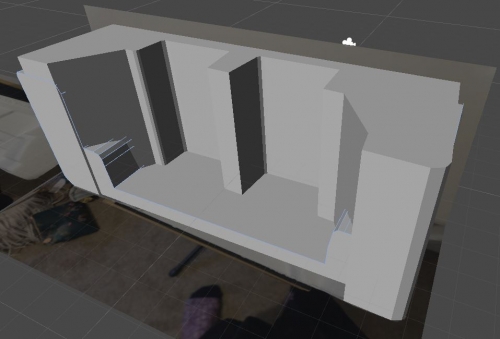Where I’m at / reflections so far:
I’ve been iterating on the process and methods on how to accurately translate a found-object platformer level in Unity through projection mapping. Having utilized both self-made and found object interactive projection in Unity during my 1st semester, I gravitated towards something in-between: Recycled pieces of Styrofoam. For others, this might seem like useless trash, but for me it’s a peculiar game environment for which people can interact with through light projection. Blue Zoo’s Momoon plays a big role in my use of Styrofoam as my platformer level iteration. The use of minimal light projection, as well as how the characters interact and harmonizes with the Styrofoam environment are elements that lends a lot to my ideas. Momoon: https://vimeo.com/289059542
I’ve been gathering a lot of Styrofoam and cardboard boxes in my room since I started in MAGI, with the intention of eventually attempting a projection mapped project with them. My inquiry: How can a platformer game be developed for interactive projection-mapping? also developed a side-inquiry: How can found objects, or recycled trash such as cardboard or styrofoam give insights on level-design through projection mapping. While I am by no means a level design professional, I intend to extend my research towards level design.
My iterations gave refinement to my process in creating interactive projections using Unity and Resolume Arena. I’ve also found and incorporated a Unity plug-in through spout, which can treat any camera or texture in Unity as a source for video playback in Resolume Arena. This definitely expands the possibilities of interactive installation works using Unity and Resolume, and perhaps eventually once I get my bearings on it, Touch Designer. Unity Pro Builder is another tool I’ve integrated in during my experiments, as it enables me to create more complex objects in Unity faster than exporting from another 3D program.
In my process video, I’ve tried two approaches in developing a platformer prototype. The first one is projecting a Unity environment initially, then creating through eyeballing Unity’s Pro Builder and the projected space. In short, mapping less in Resolume but more in Unity. Surprisingly, this worked better than doing advanced mapping methods in Resolume, which I somewhat did during my Studio 1. This was successful and may be implemented in iterations in the world that can be created quickly. I intend to test this real world counterpart with this method. The second process is of a more pre-produced nature, where I take a front and top photo of the styofoam level, then manually try to replicate its architecture as best I can in Unity Pro Builder. Considering a lot of human error that may contribute in this second process, it also worked better than I expected. Despite being more time consuming, this process will also allow me to alter the level easily for an interactive projection mapped experience. To satiate my curiosity, I am also in the process of trying out a third method, which involves photogrammetry. Moving forward, I might use a combination of these processes in creating my end output.
In CPS, and APD there is a theme of “Forces.” A theme I think is very relevant to my experiments so far. Forces or constraints in exploring my inquiry is the constraints placed by projected light, the tactile aesthetics of the material projected on, as well as the level design and architecture limited by said object. The player as well contributes to the creative forces at play, as their line of sight and their movements while interacting (using a gamepad) with the platformer game could play a role in unique projection interactions. One example could be when a player walks closer to the installation in order to have a better view of their character/interactions, such as the spaces in the Styrofoam’s structural cavities and gaps.
Upon establishing a working system, I intend to create more dynamic animations within the playable character. In our Illusion of Life class, the project I proposed would be human movement, focused on traversal such as climbing, vaulting, leaping, jumping and so on. Exploring how I can combine abstraction to these movements is something I am interested as well. I am hoping to develop the animated component of my studio work as I engage with my responses in Illusion of Life. Environmental interactions and level design are also game fundamentals I wish to engage with as I proceed further in creating a platformer. Unity Playmaker and platformer and interaction mechanics are also things I aim to improve as I progress. Lastly, the concept of Play and Hybrid Reality is something I wish to explore as I develop my interactive projection mapping game’s flowchart, additional game mechanics, and possible narrative.
Royalty-free BGM 80s from: https://elements.envato.com/
About This Work
By Carlo Tolentino
Email Carlo Tolentino
Published On: 20/08/2019
